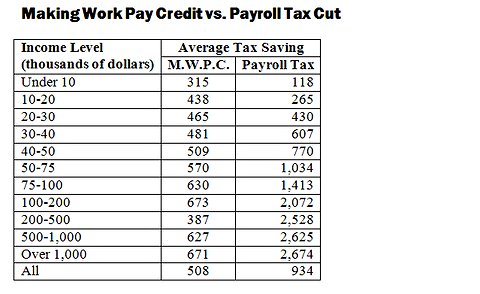While taxes are expected to increase for most Americans as a result of the deal between the White House and Congress to end the fiscal impasse in Washington, corporate America was more fortunate. A bevy of tax breaks and credits that had been scheduled to expire at the end of 2012 will be extended for another year, costing taxpayers $46.1 billion over the next decade, according to Congress’s Joint Committee on Taxation.
The preservation of these subsidies and deductions has become a perennial Washington ritual in recent years, with lobbyists and companies and their allies on Capitol Hill securing their survival in the fine print of the tax code. Washington’s inability to close many of these loopholes is a sign of just how reluctant business is to sacrifice prized subsidies despite loud calls from many chief executives in recent months to raise taxes, cut spending and deal with huge budget deficits.
“Except for the people who like it, it’s a giveaway,” said Eric Toder, co-director of the Urban-Brookings Tax Policy Center. “It’s hard to mobilize opposition, but the people who benefit from it benefit a lot.”
Many of the provisions survive because they are so obscure. A $62 million tax credit for employers in American Samoa benefits StarKist, which is the largest private employer in the South Pacific island chain, with nearly 2,000 workers there. The tax break was supported by Jeff Bingaman, Democrat of New Mexico, who as former chairman of the Senate Energy and Natural Resources Committee was an advocate for American territories that lack formal Senate representation.
“We support the development credit, and it’s a key factor in our ability to maintain competitive operations in American Samoa,” said Mary Sestric, a spokeswoman for StarKist. “This is a big priority for us.”
Corporations were keenly sensitive to changes in broader tax policy, in addition to benefiting from direct tax breaks. For example, Goldman Sachs distributed $65 million in stock to 10 senior executives in December instead of January, when the firm typically makes such awards. That move helped them avoid the higher tax rates that will now be imposed on income of $400,000 or more.
The chief executive of Goldman, Lloyd C. Blankfein, was among the most prominent corporate executives who backed higher taxes as part of a broader deficit-reduction package. He and other business leaders also met with President Obama late last year as the White House sought support from corporate America during negotiations with Republicans in Congress.
Some subsidies, like a break for research by companies, can actually have long-term benefits for the economy, defenders argue.
Others, like the one that allows filmmakers to deduct the first $15 million in production expenses for movies made in the United States, are much more narrowly focused but have loyal supporters that manage to keep them alive year after year. Another beneficiary of Congressional largess is Nascar, which will enjoy a $78 million subsidy for racetrack construction over the next 10 years.
“Once they get in, they tend to stay in,” said Alan Auerbach, director of the Robert D. Burch Center for Tax Policy and Public Finance at the University of California, Berkeley.
Besides the $46.1 billion in corporate incentives over the next 10 years, there is another $18.1 billion in breaks for alternative energy, much of that going to companies as well. Producers of biodiesel, for example, will reap more than $2 billion in tax breaks. And while it may not exactly be an alternative source of energy, producers of coal on Indian lands retained $1 million in tax breaks — a provision backed by Max Baucus, the Montana Democrat who is chairman of the Finance Committee.
The wind industry, a chief beneficiary of support from Washington, will get $12 billion in subsidies over the next decade. In fact, the benefits that were included for the wind sector are slightly broader now than in previous years.
Under the new rules, contained in the legislation that Mr. Obama signed on Wednesday, new wind farms will be covered by a production tax credit or an investment tax credit similar to the ones that just expired, but the projects will not need to be finished by the end of this year to qualify; they simply must have been started in 2013.
The American Wind Energy Association, a trade group, said in an e-mail to its members that the change was made by Congress “specifically in order to accommodate the business timelines of our industry.” The business has been in a tax-driven boom-and-bust cycle.
The renewal of the tax benefits was pushed strongly by Mr. Bingaman, Mr. Baucus and Charles E. Grassley, Republican of Iowa. When the Senate began considering “tax extenders,” or continuations of various tax breaks, wind advocates pushed to have all of them included.
“There always seemed to be some bipartisan support for this,” said Philip D. Tingle, a lawyer who specializes in energy taxes. “The element, the issue was, how they were going to pay for it.” The renewal will probably cost the Treasury about $12 billion, although the wind industry insists that it will generate so much taxable activity that total tax revenue, including those at the state and local level, will exceed the tax expenditure.
The industry undertook a large lobbying campaign and says it generated more than 750,000 letters, e-mails and other communications with Congress. It took nearly 100 members of Congress on tours of wind farms and factories where components are built. The issue may be more regional than partisan; according to the American Wind Energy Association, 80 percent of wind farms are in Congressional districts represented by Republicans, as are 67 percent of the factories.
The tax credits were also extended to cover electricity made from biomass, tides and ocean waves, landfill methane and improvements to hydroelectric stations.
Article source: http://www.nytimes.com/2013/01/03/business/some-breaks-for-industries-are-retained-in-fiscal-deal.html?partner=rss&emc=rss

